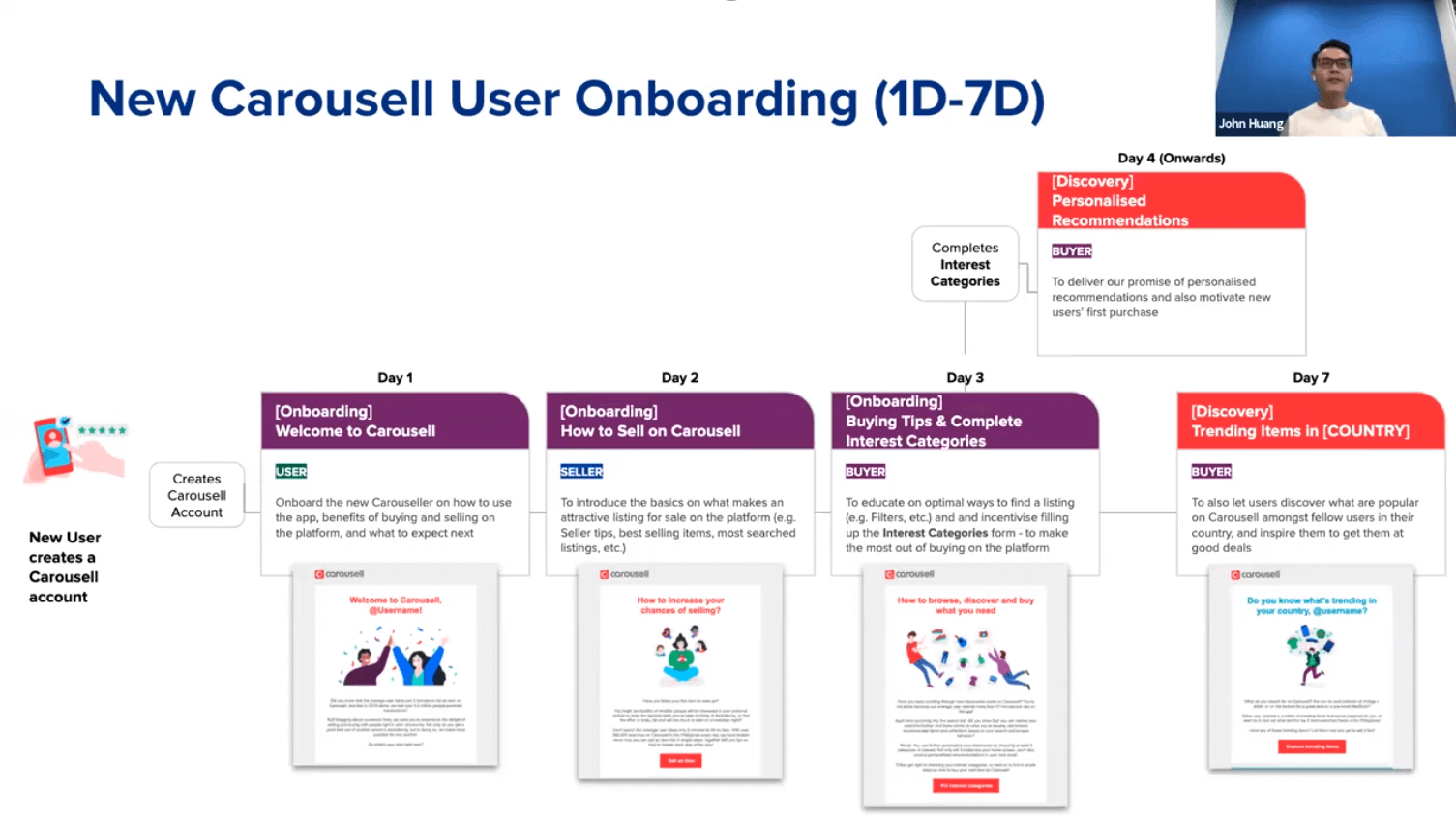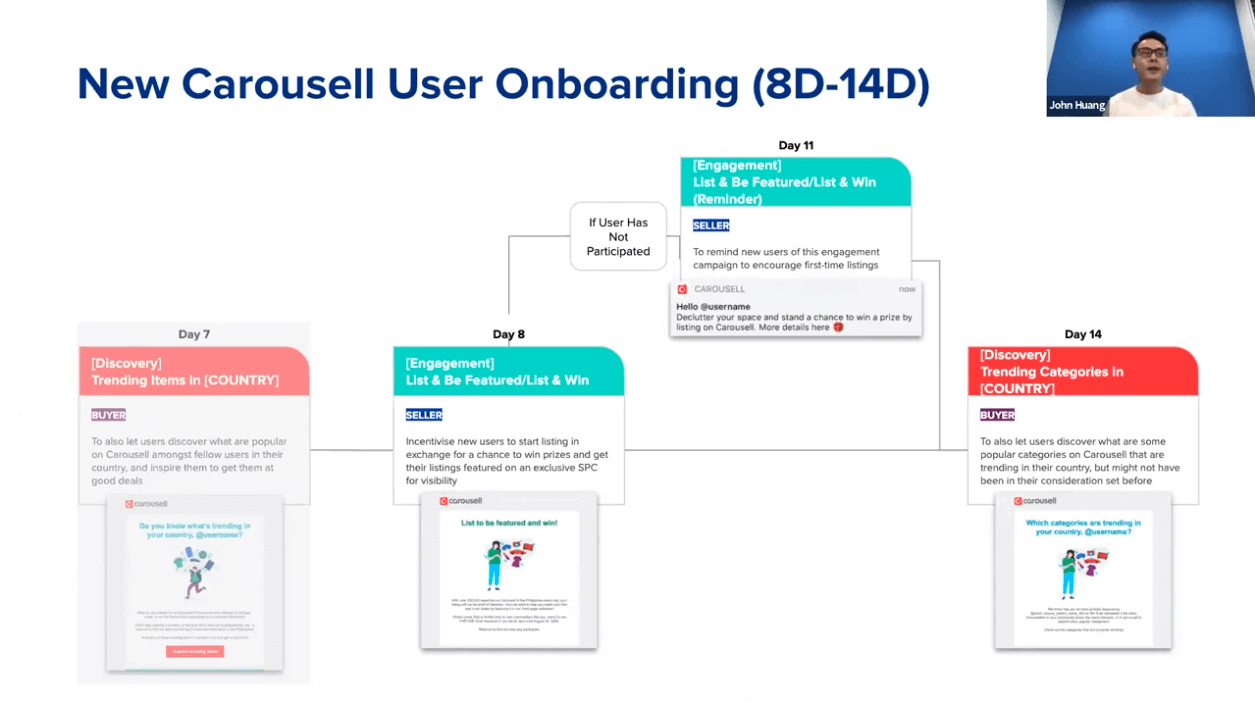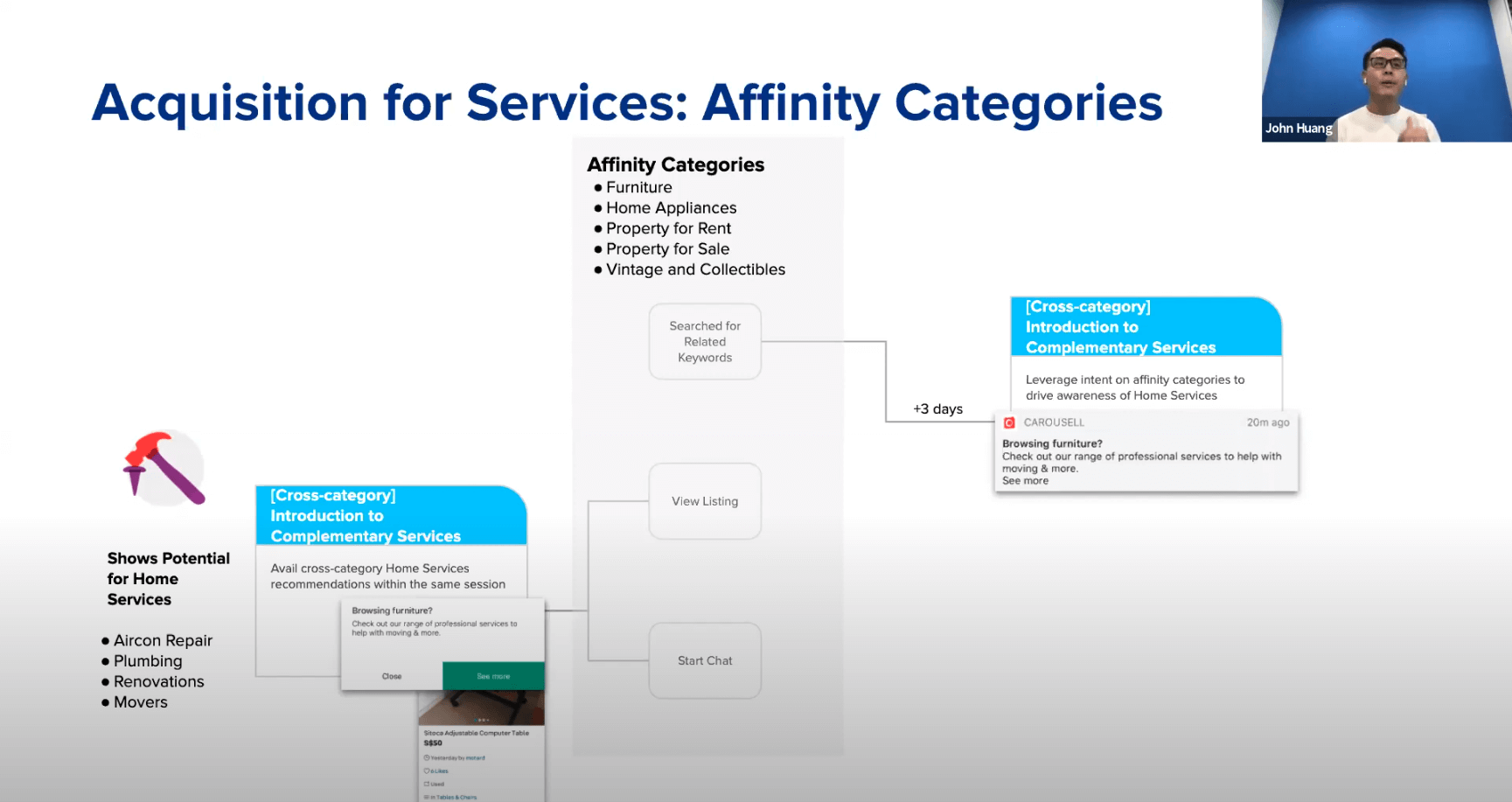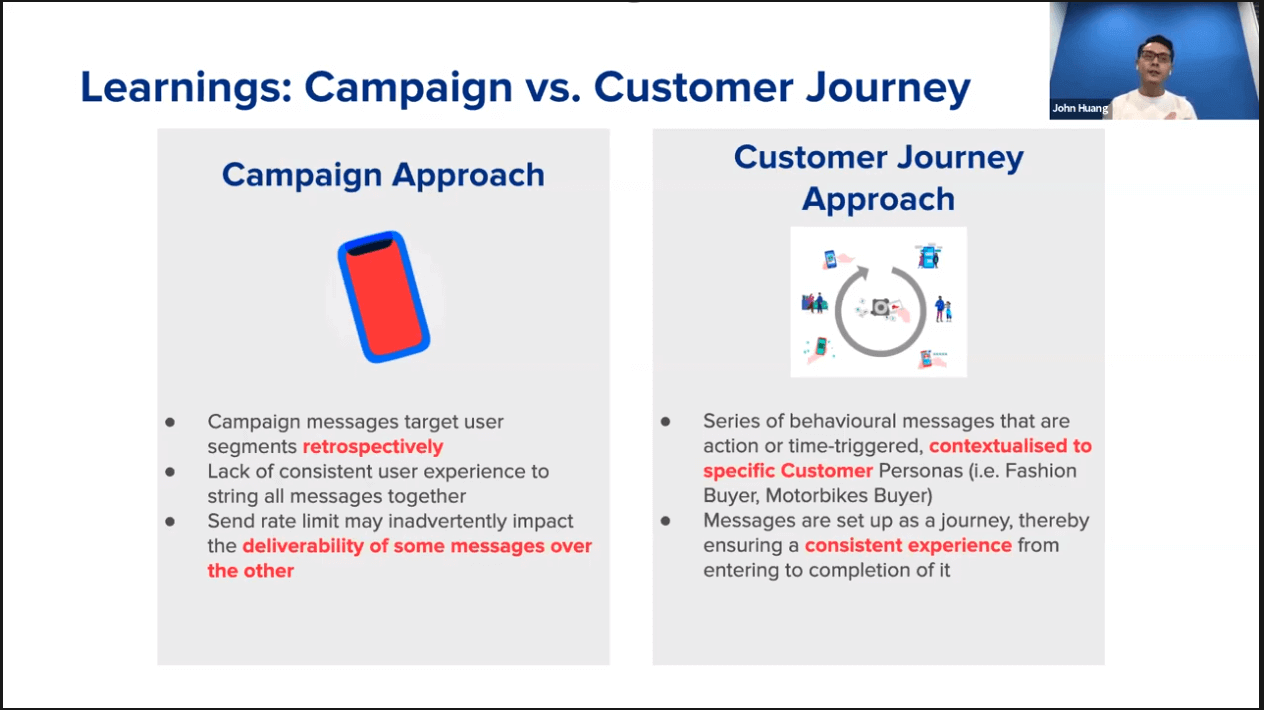In part two of our Reimagine Growth webinar series, John Huang, Regional CRM head at Carousell, gave an overview of growing a startup through cross-category acquisition and took us through how Carousell used this tactic to great success. Below, we present the ideas he laid out in his session.
The Marketer’s Perspective on Acquisition
As the digital marketing world has evolved, the process of acquisition is no longer as simple as a download or a registration. Beyond sign up or first purchase, a customer can potentially be exposed to different messages across different channels, with the goal of getting them into onboarding, reactivating, upselling, or cross selling.
Your perspective on acquisition should no longer be simply acquiring users for your business. Instead, it should be: acquiring users across different categories or product lines within your business. Of course, cross-selling is much more meaningful to verticals with large inventories such as ecommerce, online groceries, fashion, and the like. And if you’re talking about a large inventory, Carousell has it.
The Carousell Story
Carousell is an online marketplace that makes selling as easy as taking a photo and uploading to the app. It started out in 2012 because its founders had a need: they had too much stuff and wanted to declutter easily by selling to other people. Today, Carousell is in 8 markets, with over 250 million user listings and over $900 million USD in valuation.
You’ve Got to Map the Customer Journey
Here’s why mapping the user journey is important: no two users are the same.
But you can identify pertinent customer personas or user segments — for instance, a fashion buyer or users needing emergency plumbing services — and then serve up relevant messaging and offers for all users in that segment.
As mobile marketers, you’ll have to map out the user journey for these personas from end to end. What are the common actions they undertake on your app? How do you get them from onboarding to purchasing? What questions might the customer have that your app can’t solve right now? Then post-transaction, what are some cross-category opportunities you can suggest so the user keeps returning?
User journey mapping requires time and effort. But when done right, you get your strategy down. You gain a view of what you have and what needs to be developed and optimized along the way.
Post-Acquisition Onboarding: Start With the New Customer
There’s no better place to start in the mapping exercise than with the new customer.
Acquisition doesn’t end with a signup or a first purchase. You should extend it to when the customer is convinced about the app’s value (their aha! moment) and can comfortably navigate through your product.
And since there is no foolproof way to determine when they’re convinced of it, you need to provide a strong onboarding experience to keep that user from churning.
Each touchpoint addresses a lifecycle objective. The first 7 days are focused on onboarding and user discovery. Here’s how they do it:
- On day 1, onboard the new user and show them the benefits of using the app.
- On day 2, introduce the basics of what makes an attractive listing on the platform so they can start selling their stuff.
- On day 3, incentivize the user to complete a form listing other categories on the platform that interest them.
- On day 4, the user should start receiving personalized recommendations.
- On day 7, new users will be shown trending items in their country as a form of social proof to tell them they’re not alone and that their choice of using this platform is the right one.
- By day 8, users are put through an engagement piece to encourage their first listing in exchange for a chance to win a prize and get their listing featured on a curated collection on the app.
- Then the system sends a reminder about this engagement offer 3 days later.
- Finally, on day 14, new users are shown trending categories in their market.

As mobile marketers, your entire goal for onboarding is to get the user comfortable using the app and help them if they’re lost.
But what’s beyond onboarding?
Cross-Category Acquisition: Find Affinity Categories and Cross Sell
Businesses today rarely sell only one product. So they need to make a coordinated effort to identify and funnel users from affinity categories — categories where there are existing data overlaps with other products. This is where you invite them to check out the categories that other people like them are also enjoying.
Cross-category acquisition intends to widen the breadth of one’s exposure to the different categories on the platform.
With that main objective, many categories can be grouped together. For example: cars and car services, or furniture and movers.
Example: Acquisition for Cars
Some connections touch on the psychographic nature of customers such as parenthood and cars.
Some common insight into car buyers wherever in the world you may be:
- The purchase cycle for a car is long: it takes a few months to shortlist, test drive, and decide.
- The purchase decision ties in strongly to a user’s life stage and aspirations, especially in parenthood, where the purchase cycle is compressed due to the need that comes with it.
For “parenthood” segments, Carousell developed journeys that provided sufficient educational and discovery touchpoints to help them make the correct decision and that Carousell has a strong marketplace with cars for them.
Example: Acquisition for Services
Another cross-category example is services: think home repair, plumbing, or locksmith services. If cross-category acquisition is based purely on user data and overlaps in customer segments, then there’s a likelihood that marketers will miss out on the opportunity to market to those in affinity categories.
The nature of service engagements are reactionary and hardly pre-planned. Busted sink? Call a plumber. Locked out of the house? Find a locksmith. In this services category, you have to be building awareness even before the actual need arises.
It’s a great idea to set up campaigns for users in affinity categories, such as: furniture, home appliances, property for rent, property for sale. This way you can leverage intent on these affinity categories through the use of an in-app notification within the same session or after a transaction, pointing them to another category they might like.
Lessons: Campaign Approach vs Customer Journey Approach
Most marketers are used to a campaign approach. While there’s nothing wrong with this, there is no concerted effort to string different messages together for a consistent user experience that is guided by both user actions and time triggers.
But if you take a customer journey approach, where you plan out a series of messages that are triggered based on user actions or time delays between events, you can be sure that what users see are contextualized to them.
In terms of set up, the customer journey approach gives you a better chance to ensure a consistent messaging experience from entry to completion. This inevitably leads to greater success across the different life cycle stages from acquisition, to retention, reactivation or upselling and cross-selling.
ABOUT THE SPEAKER
John Huang is Regional CRM head at Carousell. John is a CRM business leader and practitioner with expertise in tackling business objectives by building 1:1 customer relationships that are scalable and run across channels. He does so with a demonstrated experience in Customer Journey Mapping across different products and personas, and in deriving a Single Customer View.

The Experience Optimization Pocket Guide
Shivkumar M 
Head Product Launches, Adoption, & Evangelism.Expert in cross channel marketing strategies & platforms.
Free Customer Engagement Guides
Join our newsletter for actionable tips and proven strategies to grow your business and engage your customers.















































